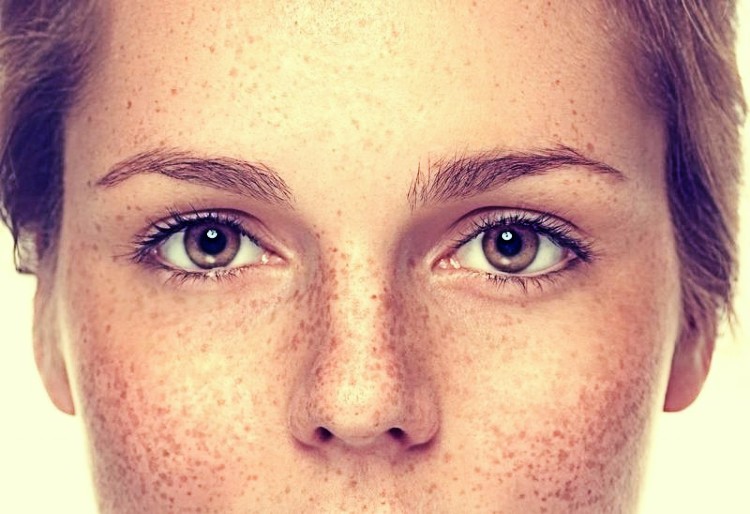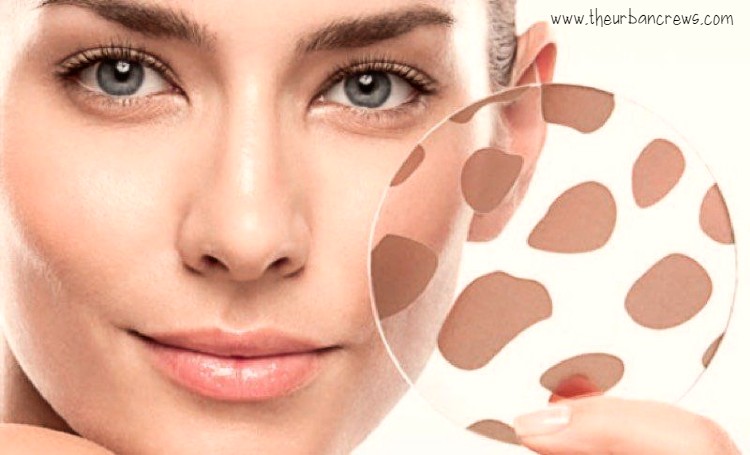Skin pigmentation – when to see a doctor, and when cosmetic procedures are enough to get rid of unwanted dark spots or brown spots – find out from this article.
The cause of pigmentation is often a negative effect on the skin of external factors. But some spots appear due to internal changes in the body, in which case a specialist consultation is required. From this article, you will find out exactly what causes pigmentation, what kinds of spots are, what are the home and salon methods for solving the problem.
Table of Contents
What is pigmentation?
Dark spots appear on the skin if the body has an uneven distribution of melanin synthesized by special cells – melanocytes. Various factors can contribute to this – the effect of sunlight, age-related changes, hormonal imbalance in the body, skin reaction to cosmetics or medications.
Sometimes poor-quality neoplasms “hide” under pigmentation, therefore, before proceeding with treatment, you should consult a doctor to find out the exact cause of such a defect.
5 pigments affect skin color:
- Melanin
- Carotene
- Oxyhemoglobin
- Hemoglobin
- Melanoid
With an optimal concentration of these pigments, the skin has a healthy color, and if it is disturbed, the color changes.
The main coloring pigment is melanin, because of its accumulation in certain parts of the body pigment spots are formed. But such a defect is not only acquired but also congenital, we are talking about freckles or moles that do not cause much trouble. But hyperpigmentation is a completely different situation when the pigment accumulates in the deeper layers of the skin and the spots acquire a dark shade, and sometimes a convex shape. Usually, this problem occurs in people over 35 years old. In some cases, pigmentation passes on its own, but sometimes you can not do without the help of a specialist.
Common Causes of Pigmentation
The accumulation of melanin in a significant amount can provoke pathological processes in the body, so this problem cannot be ignored.
The most common causes of hyperpigmentation are:
- Hereditary factor
- Ultra-violet rays
- Injury to the skin
- Avitaminosis
- Hormonal imbalance
- Allergic reaction to cosmetics
- Reaction to medications
- Pregnancy
- Kidney, Liver, and Intestinal diseases
- Stress, Depression, or other Psychological disorders
- Aging

Harmless kinds of brown spots
There are harmless types of brown spots, the appearance of which does not need to panic.
These include:
- Freckles – appear on fair skin as a result of prolonged exposure to sunlight. The shade and location of freckles can be different. If desired, the brown spots can be lightened, but it is better to just use sunscreen regularly;
- Lentigo – such spots appear at an older age and mainly on those parts of the body that are more susceptible to sunlight. Peelings help to solve the problem;
- Chloasma – large spots of irregular shape, localized mainly on the ears and neck. The main reason for their appearance is hormonal imbalance. Also, an allergy to cosmetics and hormone-containing ointments can serve as the cause of such a defect. To solve the problem, you should refuse to use hormone-containing products and take a course of cosmetic procedures;
- Birthmarks (nevi) – have a smooth contour and are, rather, a feature of a person. They are formed due to the uneven distribution of melanin under the skin. If the spot increases in size – this is an alarm, it may become malignant, so in this case, a doctor’s consultation is required. If such spots cause discomfort (rubbing on shoes or clothes), they are removed with a laser, liquid nitrogen, or another effective method.
Hazardous stains
The main diseases that provoke pigmentation are:
- Atherosclerosis or diabetes mellitus – these diseases disrupt the blood circulation, as a result of which dark spots appear on the body, mainly on the lower extremities;
- Neurofibromatosis is a disease in which brown spots with blurred borders first appear on the body, then they develop into pink nodules. This indicates changes in bone cells;
- Xeroderma – a disease that provokes the formation of growths, which over time can become malignant;
- Black acanthosis is an ailment in which dark spots first form on the body, then they coarsen and become higher than the main skin, which is a sign of malignant transformation;
- Melasma – this disease leads to the appearance of brown spots on the face with clear outlines;
- Savitt poikiloderma – is a subspecies of the previous disease, brown spots also appear on the face, but having mixed shades (from white to brown);
- Pityriasis Versicolor – pigmentation, in this case, occurs as a consequence of the disease. Scaly spots appear on the skin.
This is not a complete list of diseases that provoke hyperpigmentation. In any case, when changing the color of the skin, it is recommended to undergo an examination.
Diagnostic and treatment methods
When you first contact a dermatologist, you need to prepare for the following procedures:
- Dermatoscopy (the study of altered skin under a magnifying device);
- Scraping (in case of suspected fungus);
- Sowing (if the problem is provoked by microbes);
- Biopsies (if melanoma is suspected).
A dermatologist conducts an initial examination, then sends him to a consultation with a therapist, surgeon, endocrinologist or gynecologist. The latter establish the exact cause of pigmentation and prescribe treatment.
Home treatments for pigmentation
Before removing age spots, you should consult your doctor and make sure that the cause of their appearance is not a serious disease.
There are several quick ways to lighten stains at home, but cosmetologists do not consider them effective because of the not deep impact:
- Mix lemon juice with water in equal parts, wipe the face with the mixture and rinse after twenty minutes. The procedure is best repeated every other day.
- Mix juice from one lemon with a teaspoon of natural yogurt and apply it to the skin for half an hour. Perform the procedure twice a week.
- Mix the juice of half a lemon with a teaspoon of sugar and rub the mixture into wet skin (except the area around the eyes) for two minutes, then wash with cool water. This procedure can be performed no more than once a week.
- A solution of vitamin E treats problem areas every day before bedtime.
- Cut the potatoes into thin slices and lay them on the problem areas for ten minutes. Repeat the procedure every day.
More Remedies:
- Grate one potato on a grater and mix it with a teaspoon of raw honey. Apply the mixture on the spots for fifteen minutes, then wash. You can do this mask every other day.
- For a faster result, pour half a glass of water into a container, cut the potatoes into slices and boil for half an hour. Add lemon juice (a teaspoon) to the broth and cool. Using a cotton pad, apply the mixture to problem areas and leave for twenty minutes. Repeat the procedure twice a day.
- Mix turmeric with lemon juice and milk in a proportion of 0.5: 1: 2 teaspoons. Treat the face with the mixture, leave for fifteen minutes, then wash. Repeat the procedure every other day.
- Mix turmeric with yogurt and olive oil (0.5: 1.5: 1 teaspoon). Apply the product for twenty minutes on the skin, repeat three times a week.
- Mix a tablespoon of starch with a teaspoon of lemon juice. Apply on stains, leave for half an hour and repeat every day for two weeks.
- Mix hydrogen peroxide with boric and ammonia (1: 2: 1 teaspoon). Wipe stains several times a day with this solution.
- Dilute blue clay with water, apply on face for half an hour, then wash with warm water.
- You can use Celery oil – a magic remedy for age spots, depression and edema
Salon treatments
- Laser correction allows you to achieve excellent results. After the procedure, the skin will be sensitive, so you need to use moisturizers and sunscreens, and also avoid direct sunlight.
- Chemical peels are also effective in treating pigmentation. During the procedure, slight discomfort is felt, after which the skin becomes sensitive and reddened. For processing the upper layers, lactic or glycolic acid is used, in other cases, trichloroacetic acid or phenol is usually used. The number of procedures prescribed by the beautician, everything will depend on the condition of the skin.
- Microdermabrasion is an effective method, which involves applying exfoliant microcrystals to the skin, and then subsequent treatment of the face with a special vacuum device.
- Cryotherapy – involves the use of liquid nitrogen, under the influence of which the upper layers of the skin die.
Read Also: Adapt These Habits: Make Your Lifestyle Great Again
















